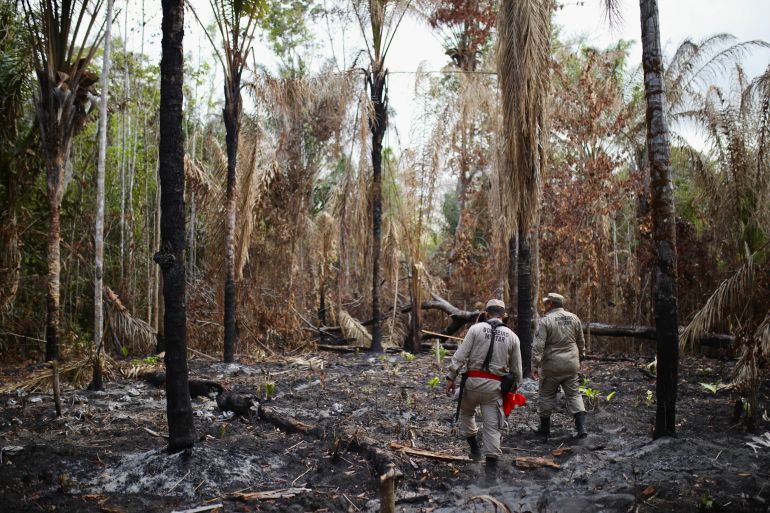
Hundreds of thousands of people rely on the Amazon’s rivers and streams for food, transportation and income.
But the historically low water levels have forced residents to reimagine their relationship to the environment. One tributary, the Rio Negro, plunged to levels not seen in 121 years.
“We are completely dependent on nature,” Maria Vanessa Tavares de Souza, a 36-year-old teacher who lives in Serafina, said during a community meeting to discuss the problems caused by the drought.
“Now that climate change has unbalanced everything, it’s going to be hard for us to survive here.”
Already, one of the residents’ primary food sources is threatened: fish. Some have been left stranded as the river recedes — and in the water that remains, the corpses of other fish float to the surface.
Abnormally warm temperatures are suspected in the mass die-off. Residents fear the dead fish could pollute the water as they decompose.
Nine heatwaves have hit Brazil since the beginning of the year, with the heat index in Rio de Janeiro soaring to almost 60 degrees Celsius (140 degrees Fahrenheit) in November. Worldwide, 2023 is expected to be the hottest year on record.
Precipitation in the Amazon had been below average for at least six months prior. One of the long-term causes is deforestation: Rainforests soak up and release moisture, helping to generate cycles of rainfall. But without the densely packed trees, the humidity drops, meaning less rain.
“Ten to 15 years ago, these fires weren’t a problem. The forest used to be more humid, which meant the flames would not propagate,” said Ezaquiel Pereira, who works for Curralinho’s environmental department.